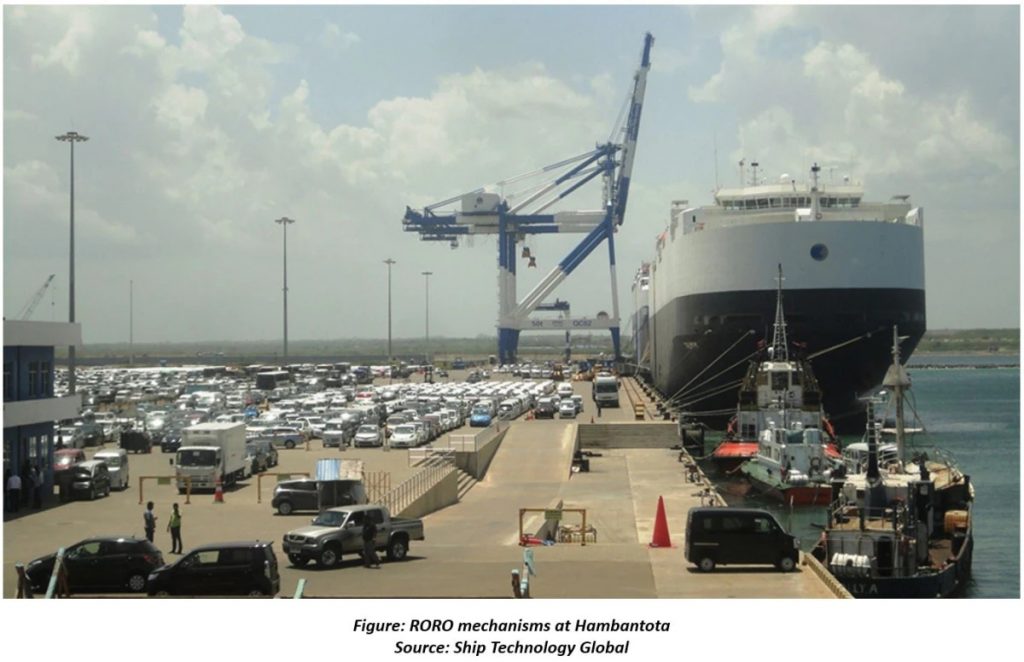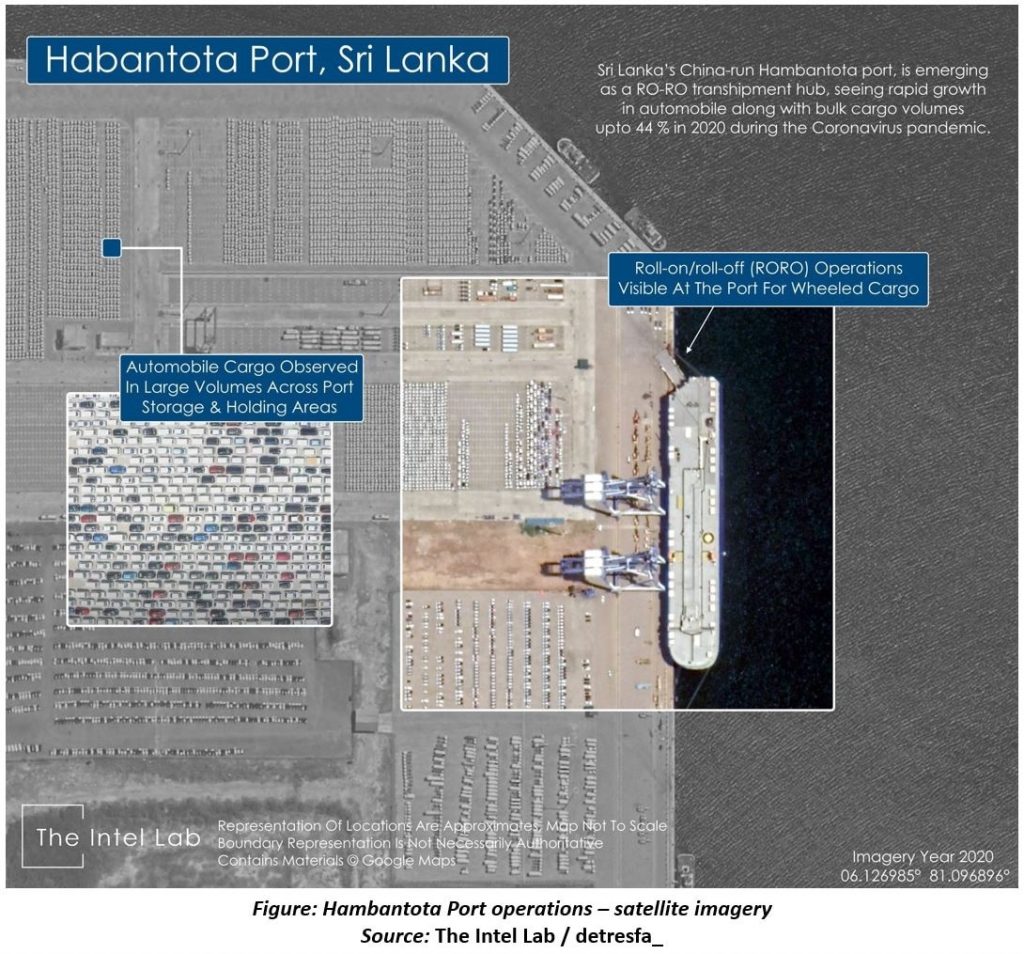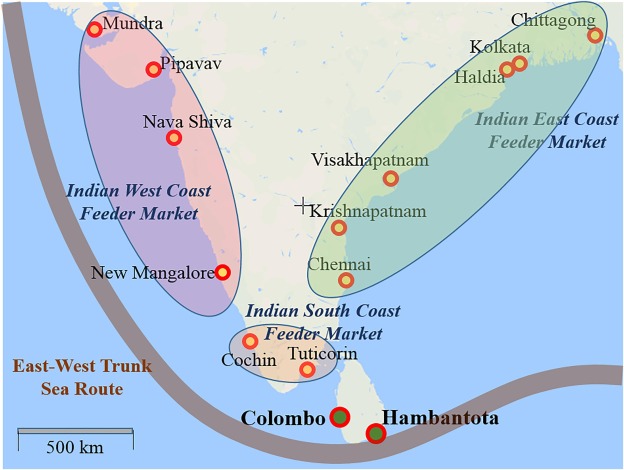
- The current predicament of Sri Lanka with China looks like a carefully crafted plot of the latter to get a comprehensive hold of the Indian Ocean territory.
- Report of a possibility of gifting a frigate to the Sri Lankan Navy by the Chinese provides an insight into what might follow in the years to come.
- As the port is already incurring losses, it might just be time before the commercial face of the establishment may soon be utilized for strategic purposes.
- Presence of Beijing so close is a huge concern for New Delhi as it is also presents a strategic challenge to our naval operations in the eastern waters.
- Integrating Sri Lanka to India’s coastal security network, joint naval exercises and a foresighted maritime diplomacy is the need of the hour.
Background
Hambantota, a small district located in southern Sri Lanka is in the thick of news in the recent past as it is pegged to have one of the best ports in the world. Hambantota’s natural harbour location provides strategic economic advantage as it is on the path between the key International shipping route of Malacca strait and the Suez Canal which is a critical link to connect Asia with Europe.
In a long term vision, to off load the stress on the existing Port of Colombo, a new port at Hambantota has been envisaged to boost economic and strategic interests of stakeholders. This port houses a fifteen storied administration complex, bunkering facilities for liquid petroleum gas, tank farms, a functional dam and two huge 600m general purpose berths for mooring sea vessels along with other facilities. It is an ambitious project planned under the leadership of Sri Lanka’s former President Mahinda Rajapaksa who also hails from the town of Hambantota.
Timeline of the Hambantota Project
The chronology of the events of the Port of Hambantota is discussed briefly below:

China’s Interest in Hambantota

The current predicament of Sri Lanka with China looks like a carefully crafted plot of the latter to get a comprehensive hold of the Indian Ocean territory. The theory of String of Pearls of China is a well-known strategic concept to engulf the Indian coast. With an aggressive security presence in Hambantota, the Chinese can potentially create major outposts of strategic significance. A trade deadlock with the small island nation will grant access to a 99 year old lease of a whopping 15,000 acre land base to their utilization.
Hambantota’s role in Geopolitics
A recent report of a possibility of gifting a frigate to the Sri Lankan Navy by the Chinese provides an insight into what might follow in the years to come. Perhaps, this might be an initial step in a project of building a naval outpost in our neighbourhood. Although the Sri Lankan analyst think tanks assure that the Hambantota port’s functioning will be for civilian purposes, historical Chinese partnerships with many nations have showcased hidden layers into the narrative that might be set superficially.
As the port is already incurring losses year on year since its inception, it might just be time before the commercial face of the establishment may soon be utilized for strategic purposes. With Sri Lanka already signalling the shifting of its naval base from Galle to Hambantota, in the future, it might be in a difficult position if Chinese coercion increases for the latter’s naval logistical accommodation. When that happens, what potentially might start off a helping aid to enhance the existing infrastructure might soon translate into the development of a full-fledged intelligence and reconnaissance outpost which can be dually used for commercial and military gains.
Hambantota’s significance to India

The distance between Hambantota and Kanyakumari is approximately 250 nautical miles: That means that Beijing could have never been so close to the Indian maritime coast! This is a huge concern for New Delhi as not only does the Chinese naval operations pose a huge challenge due to the proximity to the coast; but also presents strategic challenges to our naval operations in the eastern waters. The reports of Chinese deployment of third party ships to gather hydrographic intelligence will not be much of a problem anymore if the Chinese can have their own settlements in the region. This is a strong challenge to India’s strategic and security interests despite the SAGAR and Neighbourhood First policies treated by the Government.
The multilevel trilateral meeting with Sri Lanka on maritime security under the aegis of the NSA held recently with one of the major decisions of making it a biennial event is a welcome move. The Security And Growth for All in the Region (SAGAR) principle, the plan to integrate Sri Lanka to the coastal security network, joint naval exercises with Sri Lanka and a foresighted highly impressive maritime diplomacy is the need of the hour. An inclusive cross functional diplomatic and security channel committed to safeguard the regional and maritime interests of the region possibly will address the ongoing intensification of Chinese interests.
(Author is an Assistant Professor in a private engineering college in Bengaluru. His research interests include aerospace engineering, public policy and India’s International Relations)
References:
- [1] ShirajivSirimane (21 February 2010). “Hambantota port, gateway to world”.Sunday Observer.Archived from the original on 24 February 2010.Retrieved 30 April 2011.
- [2] AsanthaSirimanne, AnushaOndaatjie (30 November 2019). “Sri Lanka leased Hambantota port to China for 99 yrs. Now it wants it back”. Business Standard.Business Standard Ltd. Retrieved 2020-08-08.
- [3] SingaporeMarch 19, Saikiran Kannan; March 19, 2021UPDATED; Ist, 2021 16:07. “Exclusive: Revival of Hambantota port in Sri Lanka may strengthen China’s position in Indian Ocean”. India Today.Retrieved 2021-03-25.
- [4] https://www.hindustantimes.com/analysis/china-s-strategic-ambitions-seen-in-the-hambantota-port-in-sri-lanka/story-PErf7dzG8lZINVGuF37gxK.html
- [5] https://www.financialexpress.com/defence/chinas-growing-presence-in-sri-lanka-and-indias-concerns/2260612/
